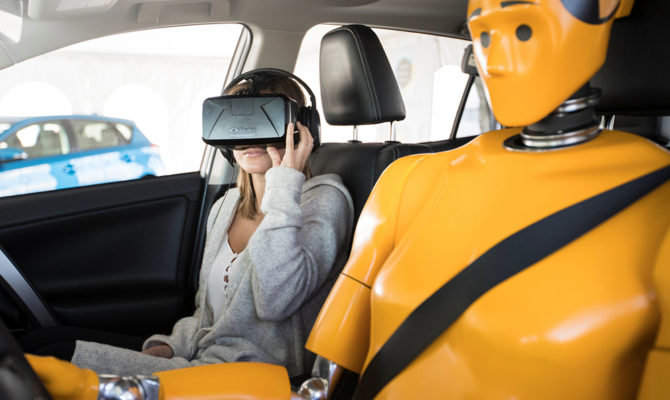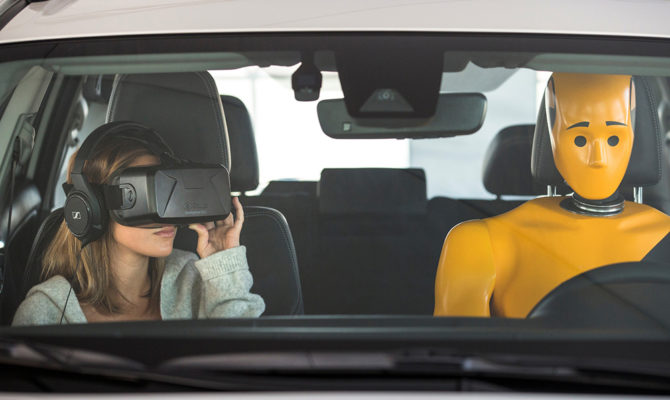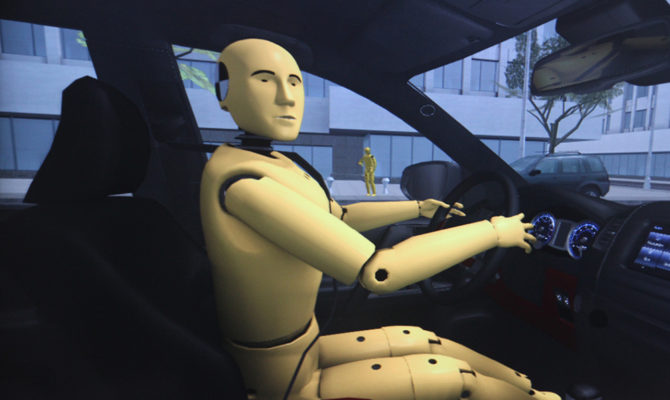High-tech safety features that, not too long ago, were pricey options and only available on prestigious models, are now standard on two of Toyota’s most popular models.
Every 2017 Toyota Corolla and 2017 Toyota RAV4 comes with a Toyota Safety Sense (TSS) package and almost every new Toyota sold by the end of 2017 will come with this innovative safety package.
“Canadians will buy more than 150,000 vehicles equipped with Toyota Safety Sense over the next 12 months,” according to Stephen Beatty, Vice-President Toyota Canada Inc. at a driving demonstration event in Maple Ridge.
A Pre-Collision System, Automatic High Beam and Lane Departure Alert are all included in the base TSS bundle and there’s a TSS-P package that also adds Dynamic Radar Cruise Control and a pedestrian detection function.
Beatty did, however, emphasise that these clever active safety systems are designed to “enhance, not replace, driver control”. Due to cost savings gained through innovation and high volume production, he also estimated that TSS only added about $300 to the price of these 2017 models.
The Pre-Collision System (PCS) uses a camera and laser beam to detect a vehicle ahead. It first prompts the driver to take evasive action if a collision is looming, with an audio and visual alert. It can provide additional braking force using a Brake Assist feature and it will automatically apply the brakes (full force), if no action is taken by the driver. Obviously, road conditions and other factors can influence the outcome, however, a live demonstration in a RAV4 certainly proved how effective PCS can be.
The operational range (approximately 10 – 80 km/hour) of PCS covers speeds at which at least 80 per cent of rear-end collisions occur, according to Toyota. TSS-P enhances the speed range of PCS and adds a Pedestrian Detection feature by using a millimetre-wave radar upgrade in combination with a camera.
Lane Departure Alert (LDA) uses a camera to detect lane markings in front of the vehicle and the vehicle’s position on the road. The driver gets an audio and visual alert if the system determines that the vehicle is drifting from its intended lane. TSS-P enhances LDA by adding a Steering Assist function, which guides Corolla back into its lane, and adds Dynamic Radar Cruise Control.
Automatic High Beam (AHB) uses the windshield mounted camera (behind the rear-view mirror) to help detect headlights of oncoming vehicles and tail lights of preceding vehicles. It then automatically switches between high and low beams as appropriate to provide the most light possible and enhance forward visibility.
Could this be the dawn of a whole new generation of intelligent automobiles with active safety? Leading to a day when all vehicle-to-vehicle collisions are eliminated. That’s probably too far ahead to predict, but it’s certainly possible. Toyota did use an interesting, and futuristic, virtual reality (VR) demonstration to highlight the advantages of TSS.
It was my first experience of the very cool visual world of three-dimensional VR, which is created by using a headset connected to interactive software and hardware. You’re able to freely “look around” in an artificial world, which your body doesn’t inhabit … yeah, it’s a little weird. Apparently it will be part of Toyota’s auto show traveling display. If you get an opportunity, do check it out.
In the real world, we also got an opportunity to drive 2017 editions of the Corolla sedan and the new Corolla iM, with the TSS system. Yes, the iM is effectively a re-badged Scion model. That said, it’s also a cleverly designed hatchback with double-wishbone rear suspension, more standard equipment, extra support seating, plus a sportier feel and attitude.
Recent Comments
- { Enjoyed your Forest of Bowland in the BMW X5M, particularly the photo of the BMW in front of the main part of Stonyhurst College where... }
- { Bantam designed the Jeep, not Willy's or Ford. The American military gave the original Bantam prototype to Willys and Ford to copy. There is plenty... }
- { All Escalades come with a 6.2-lilter V8 engine that produces 420 horsepower. A six-speed automatic is the only transmission offered and drives the rear wheels.... }
- { Alexandra is an excellent journalist. }
Popular Posts
- Journey to a ‘Sparkling’ Luxury Okanagan Resort “Four lucky readers will put a Dodge Journey’s weekend-...
- The Need For Speed: Hike Those Highway Limits More than half of those polled believe the province sho...
- Drives-U-Crazy… Erratic drivers. An early morning drive from Kelowna to Vancouver is nor...
- Readers Respond: The Pros and Cons of Increasing B.C. Speed Limits Increasing the speed limits will only increase risk to...
- Honda CR-V Review: The Compact Crossover To Get Things Done The CRV is a very stylish and aerodynamic crossover veh...









